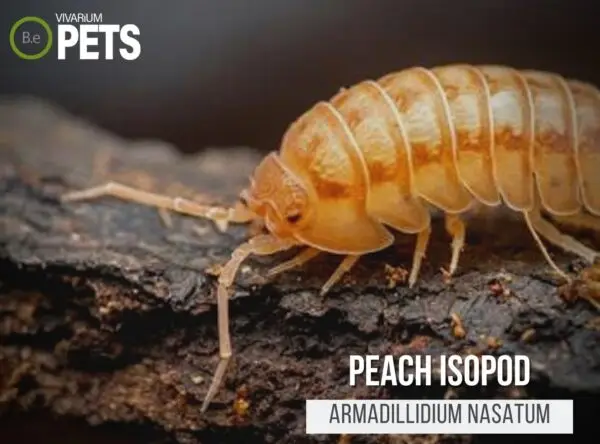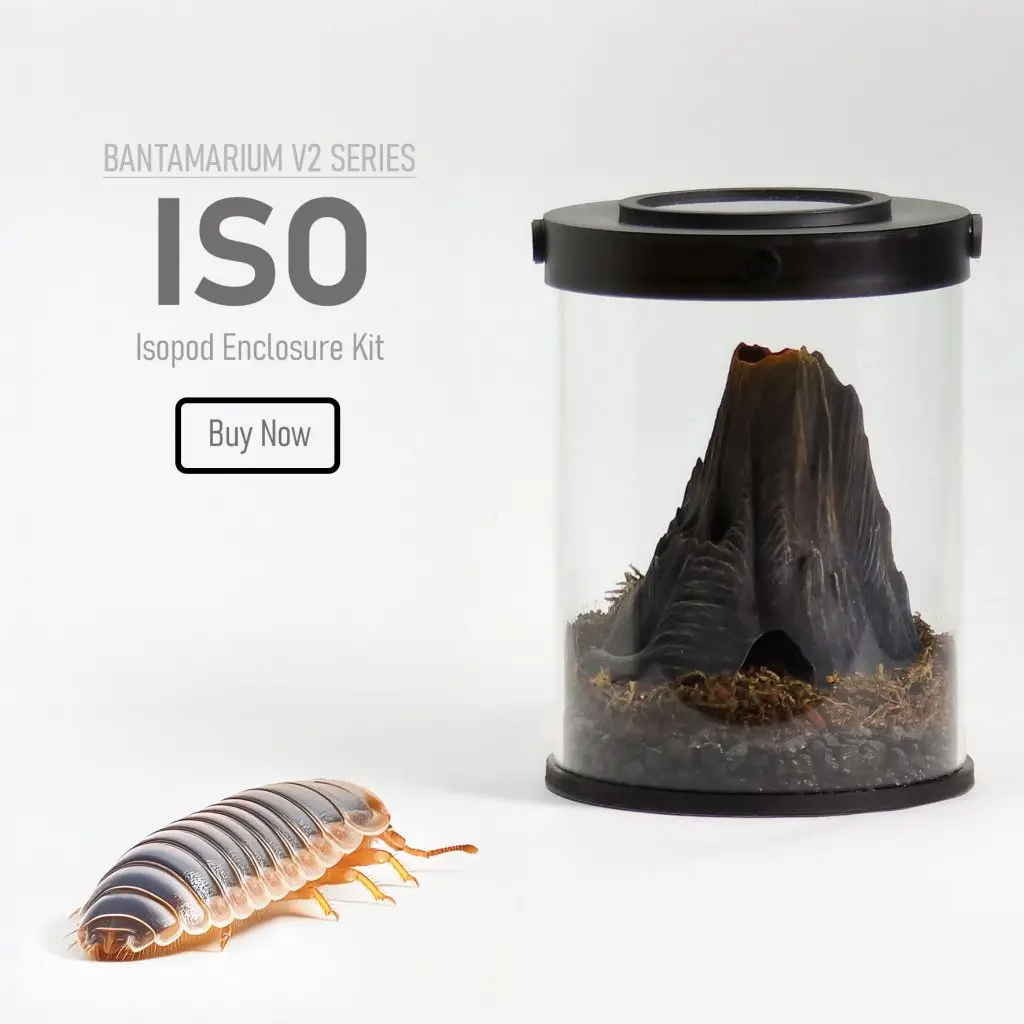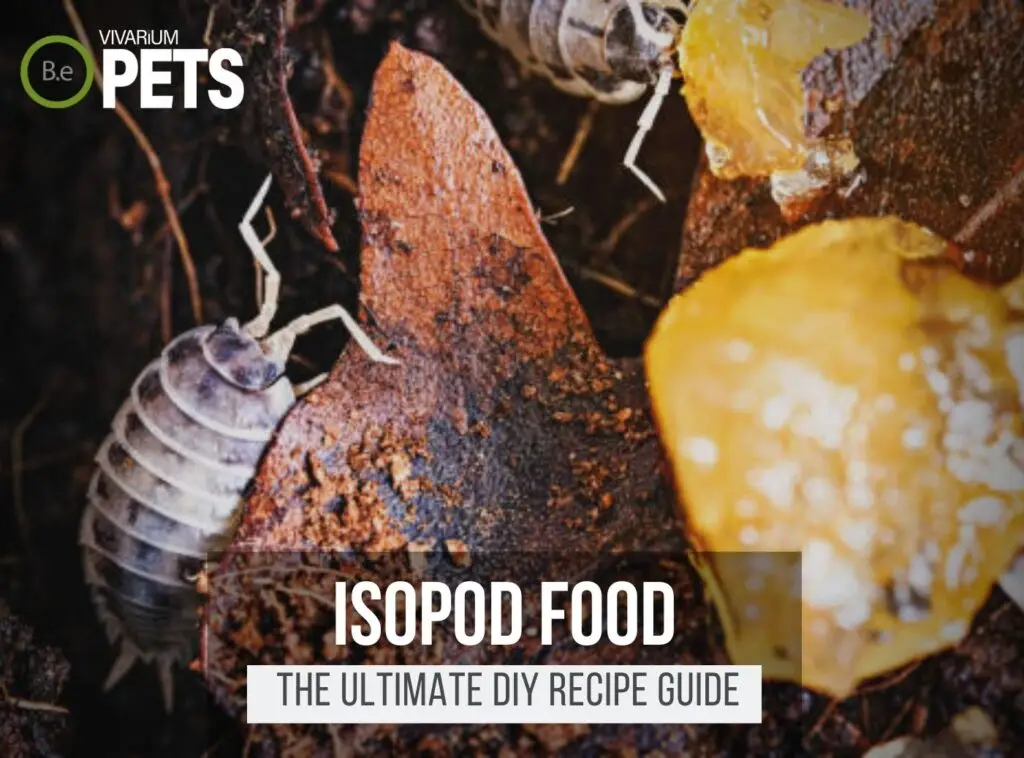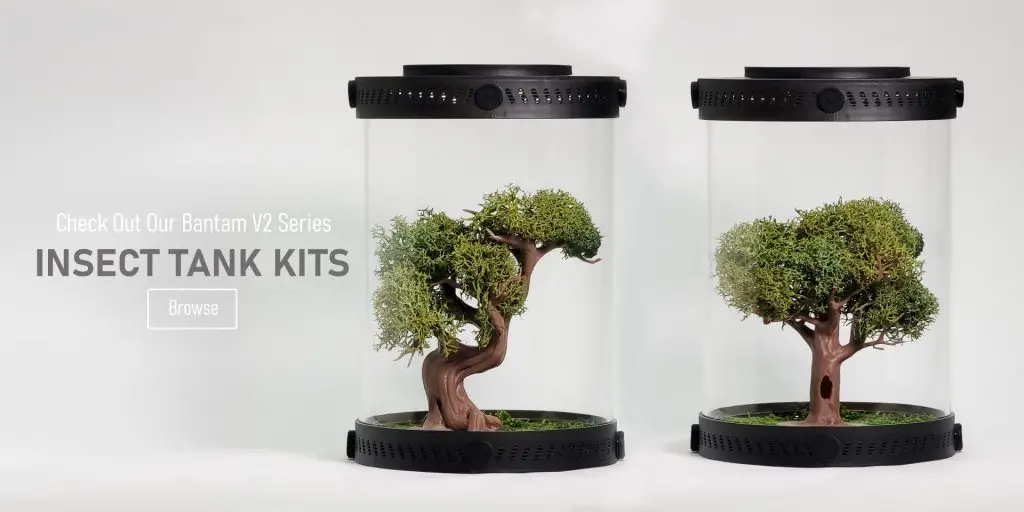Peach isopods (Armadillidium nasatum) are a unique species of isopod that makes an interesting and exciting pet.
These small creatures can thrive in a variety of environments and make wonderful companions for both young and adult caretakers.
In this article, we’ll explore the habitat requirements, feeding and handling, breeding, and healthcare tips for keeping peach isopods healthy and happy.
So if you’ve ever been curious about this small and quirky species, read on to learn more!
| Characteristics: | |
|---|---|
| Common Name | Peach Isopods |
| Family Name | Armadillidae |
| Scientific Name | Armadillidium nasatum 'Peach' |
| Use | Cleaning, Aerating Soil, Feeders |
| Temperament | Non-aggressive |
| Lifespan | 1-3 Years |
| Diet | Detritivore |
| Adult Size | 0.5-1.5 cm |
| Breeding Type | Egg Layer |
| Care Level | Easy |
| Minimum Tank Size | 2-5 Gallons |
| pH | 6.5-8.0 |
| Hardness | Soft |
| Temperature | 69-77°F |
Table Of Contents:
ToggleWhat Are Peach Isopods?
Armadillidium nasatum ‘peach’ is a species of land crustacean in the family Armadillidiidae.
They are commonly referred to as “peach” or “Georgia Peach” isopods, due to their soft and fairly pleasant-smelling white bodies which resemble a peach.
These small and curious organisms are popular in the pet industry due to their simple needs and interesting behaviors.
Create an ideal habitat for your Peach Isopods with our Customizable Isopod Terrarium Kits, which include everything you need to get started.
What Do Peach Isopods Look Like?
Peach isopods are small and oval-shaped, reaching lengths of 1-1.5 centimeters. Their bodies are made up of 7 sections, with each segment consisting of a pair of legs, antennae, and a hard exoskeleton covering.
Their exoskeletons are lightly colored and range from yellow to light brown, providing an interesting contrast against their sparse black markings.
Peach isopods also have two small cerci on their rear segments and a podgy tail end. Their movements are slow and deliberate, and they often exhibit a characteristic rocking motion due to the wave-like nature of their legs.
Benefits Of Using Peach Isopods
The benefits of keeping peach isopods in vivariums are many. First, they are a great way to enrich the ecosystem in your tank as they help to control pests and diseases in the tank.
They provide excellent substrate aeration and aerate the soil for plants. They help to prevent detritus from building up and can provide benefits for soil microbial communities due to their grazing habits.
They can also help to keep your tank clean by preying on uneaten pellets and debris. Additionally, having peach isopods in your tank can add visual interest, as they can be brightly colored and active.
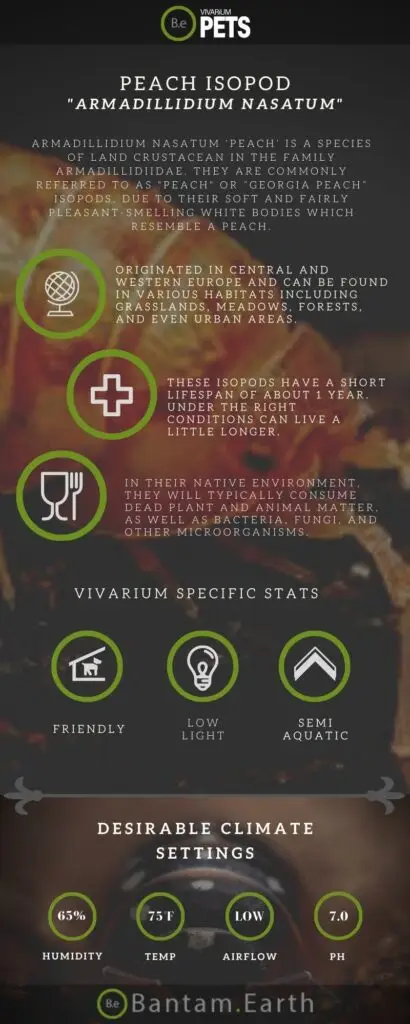

Peach Isopod Facts
Peach isopods are small, detritivorous creatures that are native to Europe and North America.
They feed on a variety of decaying plants, fruits, and insects, and have a gentle temperament.
The average lifespan of these creatures is two to three years, and with the right environment, they can breed successfully.
With proper care, these isopods make a fascinating, low-maintenance pet.
Habitat
Armadillidium nasatum ‘Peach’ originated in Central and Western Europe and can be found in various habitats including grasslands, meadows, forests, and even urban areas.
They are well-adapted to survive in differing conditions, from humid to semiarid climates, and can be found in a variety of soil and plant types.
In their wild habitat, these isopods can thrive in dark, damp places such as beneath moist leaves, logs, and stones where they can search for food amongst the detritus.
Peach isopods are active mainly at night and usually remain hidden during the day.
Replicate their natural habitat perfectly with our Bioactive Isopod Substrate Blend, designed to provide the ideal moisture and organic content for your isopods.
Diet
Peach isopods, like the majority of isopods species, are primarily scavengers and are detritivorous in the wild.
In their native environment, they will typically consume dead plant and animal matter, as well as bacteria, fungi, and other microorganisms.
It is important to note that while the isopods will typically consume all types of food items, it is important to consider the potential health risks associated with providing each food item.
Some foods can unbalance the isopods’ diet or even be toxic to them, so be sure to research any food items you plan to provide.
Temperament
Peach isopods have a generally gentle and docile temperament. They are timid creatures, so they won’t actively seek out humans and other animals, but they will become comfortable with and even recognize their caretaker’s voice.
They prefer to hide away when they feel threatened, but otherwise, they will happily crawl and explore their surroundings.
While they are not particularly social creatures and mainly keep to themselves, they will be content as part of a communal tank containing other species of isopods.
Oftentimes, peach isopods take quite a long period to acclimate and adjust to their new home.
During this period, they may spend most of their time sitting and hiding in the same spot, and this should not be cause for alarm.
As long as they continue to feed, their behavior is likely just a part of the adjustment process.
Eventually, they should become more active, stop hiding, and begin exploring as they become comfortable in their environment.
Lifespan
Peach isopods have a lifespan of approximately one to three years in optimal conditions. If a peach isopod is properly taken care of, it may be able to live a bit longer.
The life cycle of a peach isopod begins with eggs, which then hatch into a juvenile stage. Once the juvenile reaches adulthood, they can reproduce.
The cycle then starts over again with eggs. Peach isopods molt their exoskeleton four to five times throughout their life, allowing them to grow and mature.
By their fifth molt, they reach sexual maturity and will generally begin to reproduce.
Breeding
Peach isopods mate and reproduce in much the same way as other isopod species.
As with other invertebrates, they reproduce sexually, with males and females both necessary for successful breeding.
You can tell the difference between males and females of this species by looking closely at the underside of their right thorax;
Females have a long “back” shaped like an elongated spade, whereas males have a construction look more like a heart.
When mating, the male and female join together in a “wheel lock,” a special mating position.
After mating, the female will dig into the soil and lay her eggs, which are encased in a white, waxy-looking sack.
The number of eggs in each sack can range from anywhere between 10 and 30. The sacks of peach isopods hatch anywhere between 5 – 10 days, depending on the environment’s temperature and humidity.
The young will look like miniature versions of their parents, but gray. They’ll begin to molt and change colors as they grow into adults.
Where To Find Peach Isopods
Peach isopods can be found in a variety of locations across the world, but the majority of them can be found in Southern and Central Europe.
They can often be found in urban and suburban areas, particularly in decaying leaf litter and moist, damp gardens.
Some are also to be found in domestic compost heaps and outdoor flower pots. They are commonly seen during the spring and summer months and can be identified by their peach-colored bodies and white patchy pattern.
Peach isopods can also be found for sale from various dealers, pet stores, and online sources. They are generally easy to purchase through mail orders and even local pet stores.
When considering a purchase, be sure to ensure the isopods are healthy and unharmful to other creatures they may come in contact with, as they can multiply quickly.
Peach Isopod Care
When caring for peach isopods, it is important to maintain the proper temperature, humidity, and terrarium substrate as well as provide a suitable diet.
Additionally, you should ensure you have proper terrarium lighting that operates on a timer.
Breeding can also be done with careful monitoring of sexing, egg-laying, and incubation conditions.
Tank Requirements
When caring for peach isopods, their ideal environment should be a medium-sized terrarium with a pH of 6.5 to 8.5 and a water hardness of 5 to 12 dGH.
As far as temperature, they prefer a range of 65 to 85 degrees Fahrenheit, although they can withstand temperatures up to 90 degrees Fahrenheit.
The substrate in the vivarium should be damp, yet dry, such as coco coir, peat moss, or a mix. As far as lighting, try to keep it dim, as these nocturnal creatures prefer to be in the dark.
What Do Peach Isopods Eat?
Feeding your Peach Isopods couldn’t be simpler! There’s a wide variety of food sources that you can provide to keep them well-nourished, including vegetables, fruits, shrimp pellets, and various types of leaf litter.
Depending on their size, you can feed your isopods once or twice a week. Here’s a list of foods that you can feed your Peach Isopods:
- Vegetables such as cucumber, carrots, and mushrooms
- Fruits such as apples, bananas, and melons
- Shrimp pellets or other commercial isopod foods
- Leaf litter from a variety of trees and other plants
As with any animal, you should make sure to feed your Peach Isopods in moderation and always ensure that they have access to fresh, clean water.
If you follow these basic guidelines, your Peach Isopods should remain healthy and happy!
If you’re more of an avid hobbyist like myself, be sure to check out my ultimate DIY Isopod food guide. I give a more in-depth explanation of the best foods and my favorite recipe.
Best Tankmates For Peach Isopods
When it comes to tankmates for Peach Isopods, there are some great options available to keepers. We recommend only mixing compatible species that require similar or identical care requirements.
A few excellent tankmates for these unique isopods include springtails, snails, small amphibians, and other isopod species such as Cubaris and sow bugs.
Keeping these species together encourages social behaviors and provides stress relief for the Peach Isopods as they explore their environment and interact with their new tankmates.
Not all species of animals are suitable for Peach Isopods. Keepers should avoid keeping any predatory species such as centipedes, spiders, carnivorous insects, or any animals that pose a risk to their health and wellbeing.
Conclusion
In summary, caring for peach isopods can be an enjoyable and rewarding experience.
By following the habitat, feeding, and well-being tips outlined in this article, you can ensure your pet isopods remain healthy, happy, and comfortable in their new home.
For more detailed information on caring for peach isopods, please refer to our additional resources. With the proper care and dedication, these small creatures can be incredible pets for years to come.
Create the ideal habitat for your isopods with our species-specific soil mixes and Insect Enclosure Kits. These products provide everything you need for a successful and thriving isopod colony.
Frequently Asked Questions
Peach isopods typically reach a maximum length of 15 mm (1.5 cm).
The scientific name for Peach isopod is Armadillidium nasatum ‘Peach’.
Peach isopods are native to North America as well as parts of central and western Europe. They can be found in tropical and subtropical regions.
